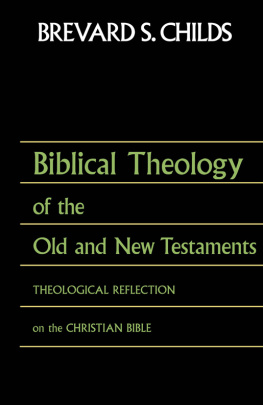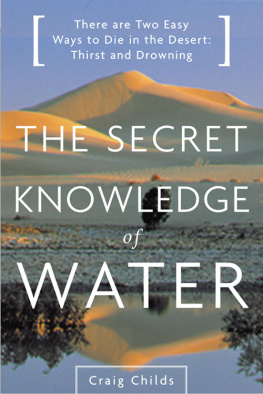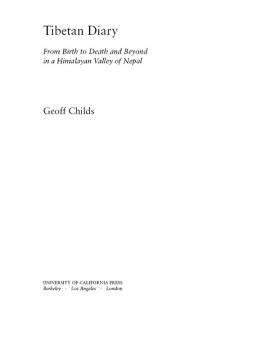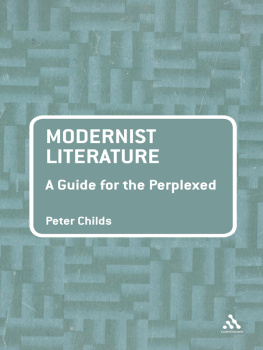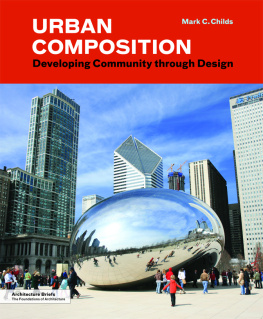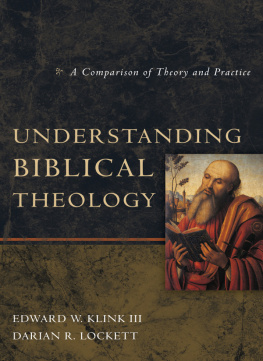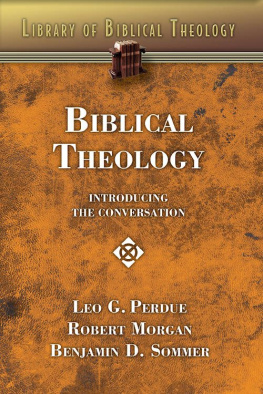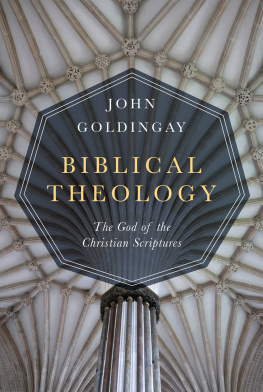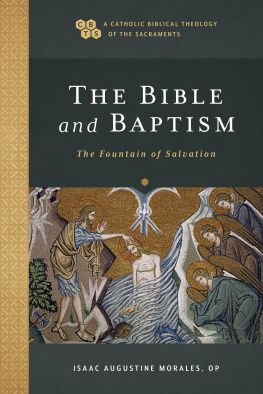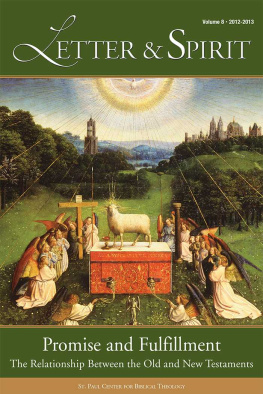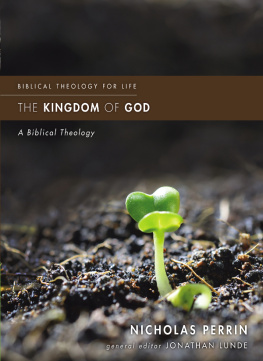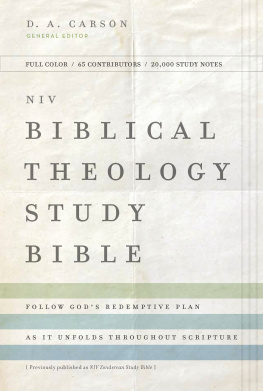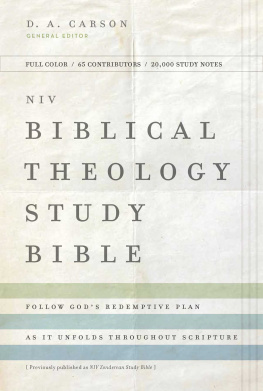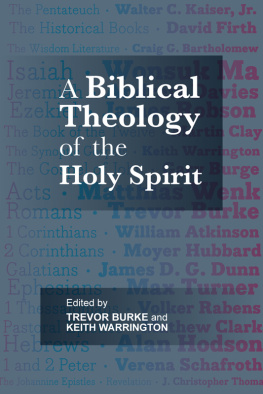
BIBLICAL THEOLOGY OF THE OLD AND NEW TESTAMENTS
BREVARD S. CHILDS
BIBLICAL THEOLOGY OF THE OLD AND NEW TESTAMENTS
Theological Reflection on the Christian Bible
FORTRESS PRESS
MINNEAPOLIS
BIBLICAL THEOLOGY OF THE OLD AND NEW TESTAMENTS
Theological Reflection on the Christian Bible
First Fortress Press paperback edition 2011
Copyright 1992 Brevard S. Childs. All rights reserved. Except for brief quotations in critical articles or reviews, no part of this book may be reproduced in any manner without prior written permission from the publisher. Visit http://www.augsburgfortress.org/copyrights/ or write to Permissions, Augsburg Fortress, Box 1209, Minneapolis, MN 55440.
ISBN 978-0-8006-9832-4
eISBN 9781451404500
The Library of Congress cataloged the hardcover edition as follows:
Library of Congress Cataloging-in-Publication Data
Childs, Brevard S.
Biblical theology of the Old and New Testaments : theological reflection on the Christian Bible / Brevard S. Childs. 1st
Fortress Press ed.
p. cm.
Includes bibliographical references and indexes.
ISBN 0-8006-2675-3 :
1. BibleTheology. 2. BibleCriticism, interpretation, etc.
I. Title.
BS543.C453 1993
230dc20
Contents
: The Akedah
: The Parable of the Wicked Tenants
I have been interested in Biblical Theology throughout my entire academic career. Yet the path toward writing this volume has been long and circuitous. I began the critical study of both testaments in seminary during the late 40s, and continued this interest in my graduate programme at Basel and Heidelberg. However, the pressure for acquiring the needed skills in various Semitic languages forced me to put Biblical Theology on a back burner for a time. It now seems ironical to recall that I spent more time in Heidelberg learning Arabic than listening to von Rad and Bornkamm.
When I arrived at Yale in 1958 to teach Old Testament, I discovered new sources of exciting distraction. The chance to study Akkadian under Albrecht Goetze was a rare opportunity not to be missed. During the same period Judah Goldin opened up for me the world of Jewish midrash, and after attending his seminars for four years, I continued the interest with a sabbatical year in Jerusalem. Of course it was obvious to me from the beginning that the study of Jewish exegesis was of the greatest importance in understanding the relation of the two biblical testaments.
In 1970 I made my first effort at sketching some of the problems of Biblical Theology at a time in which the older consensus had begun to fall apart. Almost immediately I realized that I had not thrown the net wide enough. The hermeneutical issues of Biblical Theology involved far more than simply joining together the critical study of the Old Testament with that of the New, as if one could spend the first semester with Eichrodt and von Rad and the second with Bultmann and Jeremias! It slowly began to dawn on me that everything turned on how one understood the material which was being described. I set out to rethink the role of the Old Testament as scripture which took almost a decade of work before turning to the similar task for the New Testament. At the same time I sought to develop seminars on the history of interpretation, and even taught a course on the book of Romans through the eyes of Aquinas, Luther, Calvin, and Barth.
In spite of the challenge of trying to gain competence in both testaments, this task paled into insignificance before the difficulty of gaining entrance into the field of dogmatic/systematic theology. Anyone who has ever studied under Karl Barth is left with the lasting sense of inadequacy just from remembering the standards of thoroughness which he required of his students. Soon I became painfully aware that an iron curtain separated Bible from theology, not just at Yale, but throughout most of the English-speaking world. I am sure that the fault lay with both disciplines, but deep suspicion and disinterest prevented any serious interaction. I did read the books of my colleagues, attended their lectures when permitted, and listened from my side of the wall. Fortunately there was a steady stream of superb graduate students in theology who again and again instructed me and mediated the work of the theologians. Occasional sabbatical leaves in Europe offered important help, but I am aware that the results are far from adequate.
From my library shelves the great volumes of the Fathers, Schoolmen, and Reformers look down invitingly. I have also acquired over the years many of the great classics of the Reformed and Lutheran post-Reformation tradition. However, life is too short for a biblical specialist to do more than read selectively and dabble here and there. Clearly if there is to be any future for Biblical Theology, the pressing need for the next generation is to build strong links between the disciplines of Bible and theology. At the present moment I am not always too encouraged at the prospects of ever breaking out of the sterile impasse which obtains, but then we live by hope, and many of the younger generation are hard at work in trying. Church history bears eloquent testimony to a few glorious periods when suddenly unexpected interest in the Bible exploded within the life of the church, and biblical scholars and theologians found themselves engaged in a common enterprise.
In this volume I have tried to provide rather full bibliographies for all the subjects under discussion. There are several reasons for this decision. First, I hoped to chart the route which I have taken in my own research and reflection. Secondly, I was aware that many important areas of Biblical Theology have not been treated in my book. I have tried to list some of the significant books and essays which are relevant in providing a major resource for the readers further exploration.
I am grateful for both the time and energy afforded me to pursue this project. I hope that the volume will communicate in some small degree the great joy and constant excitement which the material has evoked in me.
New Haven
15 January 1992
Errata
P. 34, Theology and Exegesis, line 1: for ability read failure; line 11: for lead read led.
P. 65, line 2: for ; line 30: for Apocyrpha read Apocrypha.
P. 126, The Jacob Cycle, line 8: for 28.10ff. read 32.22ff.
P. 133, line 3: for ; Torah and Covenant, line 1: for subject read subjects.
P. 235, line 3: for .; line 9: for signifcance read significant.
P. 239, line 13: for antedated read postdated.
P. 244, Christology, line 2: for his read Jesus; line 5: for 1.13f. read 1.3f.
P. 247, line 16: for aeans read aeons; line 33: for .
P. 249, line 6: for Gospel read Epistle.
P. 267, The Structure of the Gospel, line 23: for Isaiah 6 read Isaiah 29 .
P. 285, line 30: for Isa. 29 read Isa. 6 .
P. 292, line 8: for Isa. 13.47 read .
P. 300, line 21: for 2.3 read 2.5; line 23 should read who has become the head of the corner (2.6; ).
P. 388, line 5: for 41.27ff. read 40.27ff.
P. 475, Resurrection and Ascension, line 20: for rendering read rending; line 26: for 24.18ff. read 28.18ff.
P. 499, line 6: for .
P. 582, Romans 57 , line 10: for 2.3130 read 3.2130; line 20: for 7.11 read 7.12.
P. 609, line 11: for Jesus read John.
P. 639, line 27: for this read his; line 35 should read these parables which offer responses to criticism of Jesus ministry.
P. 676, The Theological Context, line 19: for .
Next page
